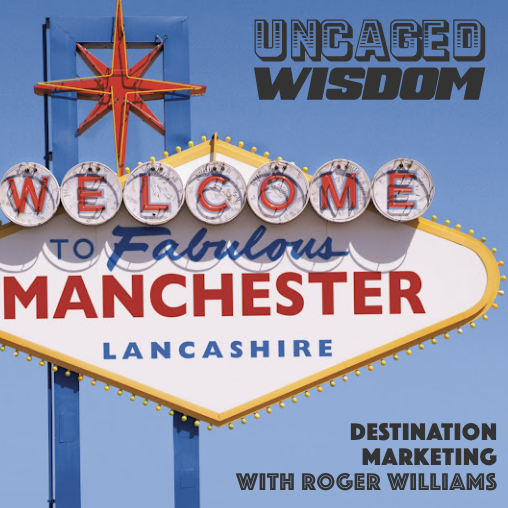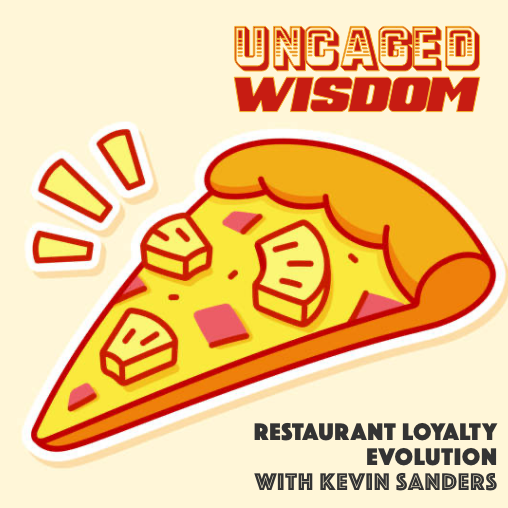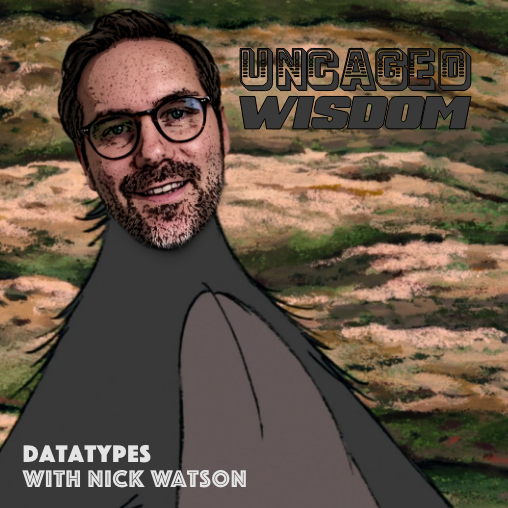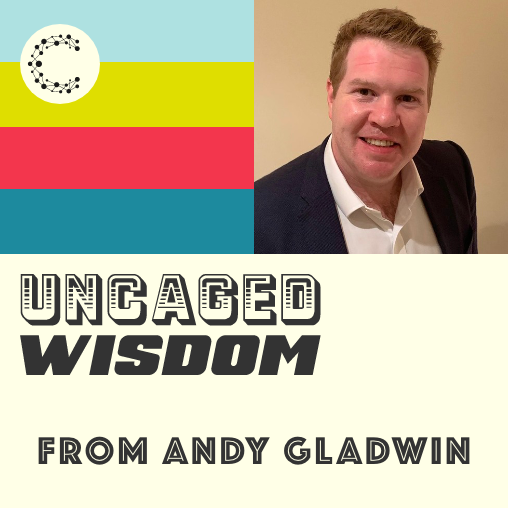The Benefits of Migrating from Legacy Email Platforms w/ Armand Castro
- 0.5
- 1
- 1.25
- 1.5
- 1.75
- 2
Armand: ...you would have an SMS silo, a push silo, and that's what they started experiencing.
Louise Hamer-Brown: Almond, you're cracking again mate.
Armand: Hold on. inaudible
Speaker 3: Uncaged Wisdom, Cheetah Digitals podcast for modern marketing.
Julian Bracey-Davis: Hello again. And welcome back to another episode of Uncaged Wisdom, the podcast for modern marketers. I'm Julian Bracey- Davis.
Louise Hamer-Brown: And I'm Louise Hamer- Brown.
Julian Bracey-Davis: One of the biggest challenges we faced over the past 18 months is changing perceptions of what Cheetah Digital offers modern marketers. We're far from simply being an industry leading ESP. No, no, today we offer a set of unified user- friendly data- driven solutions, such as loyalty, personalization experiences and messaging. All underpinned by the engagement data platform. That's all well and good, but we should not, and will not forget our origin story, which of course line email. And it's a topic that today's guest has actually gone through me already once. So we're going to go deeper into the bat cave. That's an origin story, right? Yeah. That we'll do. Our conversation, we'll be sticking email at the heart of the matter as we discussed the benefits of moving from some of our older email platforms to Cheetah Messaging. Almond firstly, thank you for being here with me and Louise today.
Armand: Of course. Thank you for having me.
Julian Bracey-Davis: It's nice to have you back. And Louise, is an honor to have you in Kayla's hot seat.
Louise Hamer-Brown: Good to be here.
Julian Bracey-Davis: What are some of the platforms people are using today, Almond? Even if it's not going into the individual versions or we got like CheetahMail like UMS or EMS and all the other letters that are in the alphabet that associated with us. How have some of these older platforms existed? They're from our past and you've seen a lot of that change happen.
Armand: Yeah. And honestly it's what got me started in CheetahMail, with Cheetah Digital overall And I love those old platforms too, to be quite honest. I got to where I am because of those old platforms. I got to learn all of this. I use CheetahMail day in, day out for like four plus years, even working before at a museum that was a client of Cheetah's and using it there. So it was a springboard for me. It's just that I know that there are certain limitations to what it's capable of doing. Be it CheetahMail, be it UMS, EMS, or like you said, any combination of three letters probably that we can cobbled together. It's become a little dated. But I do know and love it. I just hope to really drive home that there's more capabilities that we can really bring and there's more for our clients to love with messaging.
Julian Bracey-Davis: That's a nice messages setting. It's not, so I started saying goodbye. It's just that, when you've got something that we can offer all of our clients that can really, really help them in so many different ways. Ways they free not considered, and actually isn't the biggest thing. Once they start the wheels in motion to get them onto a different platform and then the benefits they will reap from that, which we'll discuss today. And Louise, just from the important thing to this, just to note that CheetahMail was very heavily American Latin, inaudible global use, but we've got lots of different platforms, other parts of Europe and the world, haven't we with different plan on those?
Louise Hamer-Brown: We have indeed, we've got quite a mixed selection of clients across the whole of Europe, as well as America. And as you say, some of them are using some of our older legacy platforms, it's always interesting to hear how clients are using Cheetah Digital and what their aspirations are for the future. And I think hopefully today we can help some of our clients understand that path to grace and to modernizing what they're doing today. And making sure that they really succeed in their own markets, whether they're in Spain or Germany or France, as well as the UK and USA.
Julian Bracey-Davis: Louise, you've been spearheading a lot of the change, well getting some of our clients onto the new platform. Had some interesting conversations with some who've done it in the past. Just off the top of your head, have you remembered any, or could you recall any moment where actually they weren't sure, but now they've done it and they're actually happy. We've got some case studies we'll link in the blog that accompanies this, of course. But in any of your conversations, is there anything stood out to actually sort of an aha moment?
Louise Hamer-Brown: Yeah, actually there's a common thread to the clients that I've spoken to that actually, this was a long held plan. They wanted to become more sophisticated with their email campaigns. And they were on a journey to get there. So it just took time to realize that ambition and to get all the stakeholders in their company on board with that journey and understanding why it was important to journey to go on. And I think for both of them, the key factor really was to move away from what we call batch and blast whereby you might be sending an email newsletter, the same email to your entire database. Wanting to move away from that marketing, where those engagement levels were getting very low. The open rates, click through rates were very low and moving to more of a segmented database. So you could send different versions of the email to different segments and then get more and more sophisticated from there and how they mapped out that path of going from zero to hero. It's not something you can do overnight, but you obviously need the tech, the right platform to take you there and give you that ability. And for them, it was really understanding the difference between those two worlds and the results that they could get. The increases in turnover that could be generated, the ROI from all the marketing efforts. The fact that they no longer had to spend hours operating with work arounds, to overcome issues. They could get to being more successful and more sophisticated with their email communications very quickly. For all the clients I've spoken to, that was the aha moment. Actually Cheetah Digital can help us. It's not something we have to do on our own. So I've been worrying about it for a really long time, several years in some cases, and actually could do it overnight almost if you get the right people behind you from Cheetah.
Actually just quickly to touch on what Louise said. It really did resonate with me that a lot of our clients are looking to get a little bit more sophisticated, a little bit more advanced. And they find themselves facing some tough tasks, some tough workarounds that I used to do myself. I used to break down so many of these campaigns, I used to break down and use behavior tags in CheetahMail so that I can break up how to target folks. I used to do all of these workarounds as well on a day-to-day basis. And the thing is, as you progress in the tech and maybe get to move into something like messaging, I think the key thing to think about is sophistication doesn't necessarily mean it has to be complex. And that one key philosophy that will really hopefully come through as we go through what I believe are our pillars of function and capability that allowed that to happen. I would say, there's three key things. Data is obviously foundational critical to all of this. Execution is the next piece, data being there is one thing, but also being able to access, utilize, and actually execute on that data with targeting or creative is critical. And last would be analytics and growth. So understanding how everything performed and taking actions from there to really expand what you're doing. Again, because there is more functionality there's more means to understand and there's just a better way for you to grow.
Julian Bracey-Davis: We'll go through those free pillars that you've just outlined there. And again, for the inaudible because we will by getting it into the head, we've got data, we'll be looking at data execution and growth as our free themes to go through this. When we go for each one, we should look at a little bit of, I guess, what they currently have, what they currently move to and the challenges and the solutions to both. How'd you want to buy off the data section?
Armand: Let's just start off with that, in that way and focus maybe on one, what they might have right now with CheetahMail or a UMS, EMS, or what have you. And essentially it's flat file. So it's just as wide a number of columns as you can create on a flat database. So as your needs expand, you're just going to have to add more columns. It has worked before obviously if you have more of a simple maybe list driven approach, or like Louise said, if you're more batch and blast, then it's really no issue. If that is more aligned with what you're trying to do, there's nothing wrong with a flat file. There is some flexibility within it like using behavior fields and being able to adjust that using bit fields as well to really create some unique work arounds and allow yourself some flexibility. We've also done abstracted relational data where it's like first product, second product, and you basically have every single item listed out for every person. So it's not quite ideal in how it functions, but it can function for certain people or for certain clients. It's just limiting and it takes a little bit of creativity to really start doing a little bit more sophisticated stuff. I'm not saying it's not a very functional setup, but as you are growing, and like we said, folks are trying to advance themselves and sophistication. It becomes a bit of a blocker at times.
Louise Hamer-Brown: Almond, is it a case that the data is quite siloed in a legacy platform and also some of the work arounds are that you're having to export less from other places and import those into the legacy email platform in order to then send your email. Is that some of the issues, I think some of the clients I've spoken to have experienced and that's a big desire to improve upon.
Armand: Absolutely. And obviously looking back at my time working on it, when you're in that silo, you don't realize you're in that silo. You're closed off. You're just buried in that email silo. And it's very one dimensional. And to your point, as my clients which were really enterprise level retailers and luxury retailers as well, they were trying to get a little bit more sophisticated. We're having to import more data from other sources and really creatively layer that onto the flat database. We're having to export out pieces to try to inform other channels. And obviously there's a little bit of latency there. It's not ideal. There's a number of issues that looking back now, you realize, Oh, that could have been smoother. But at the time it was like, Oh, this is just the reality of it. And sometimes that's the mentality one might have. It works right now, but you don't realize it could work better until you get to see, until I got to see all of those other functions that we could provide and how much simpler it would be to have a cross channel solution, have a unified database that's fully flexible that can actually take in all this data intelligence really, and map it out much better. So it's a little bit of hindsight is 2020. But you have to your point, I more than just saw that, I experienced that.
Louise Hamer-Brown: So does that mean that we're talking here about a single customer view database or an SCV, which a lot of marketers think of as the Holy grail, that would be an awesome thing to achieve a true single customer view? Is that something that we're talking about here in the new world with Cheetah Digital?
Armand: It's something that can be achieved with the EDP? It's just a matter of making sure that you are feeding in all of that data to inform that single view of the customer. So it becomes an achievable goal. It's exciting. So knowing that you have a means to actually get there. I'll be frank, it's probably not going to be so easy obviously. You want to make sure that you aren't feeding all the different channels appropriately and there's might be limitations in how maybe your point of sale which might be dated is able to feed in data. Maybe there's some limitations on your other parts of your stack. But at least we can start identifying that and rectifying it or solving for it and hopefully getting all of that data in a single place to not just inform email, and really start informing the overall customer experience. And it's honestly exciting as I see more and more of our clients starting to do that and leverage that within the CES.
Julian Bracey-Davis: It is that willingness and the acknowledgement from many of these businesses, both big and small that they need to do. They need to take that email on the messaging to the next level. They need to do more sophisticated things. There will equal importance this so, it's not the middle column, it's just one of our free columns, but execution amount. And this is so important to all of my clients, because that's really at the core of what they're doing as the marketers we're working with are executing these campaigns. However, with a little bit of assistance, but mostly they're doing it for themselves. And that's the whole reason why they're taking this journey with us. So with execution in mind, let's do the exact same activity. Let's look at the benefits of messaging.
Armand: Yeah. And that's a great next step to focus on because really how I thought about this is it flows logically. You start with the data, you access that data, you execute on that data. And that's how it's supposed to be. The data should inform what you're able to execute. And obviously that's one key starting point differentiation that segues us directly into the execution side of things. That the data can inform all of this and that's exciting. But beyond that, there's quite a few things really and I might start referencing things that I experienced throughout, but obviously the first one is, and the first major, major, major differentiation across all of this is that messaging is cross channel. So as I had clients who were like, " Hey, we're looking to add SMS." " Hey, we're looking to add push." Before obviously they'd have to go through another vendor, maybe a crate, like Louise said, another silo of data. More and more silos, more and more fragmentation of where data might live and more and more of a disjointed customer experience because you would have an SMS silo, push silo, and that's what they started experiencing.
Julian Bracey-Davis: You sound like a inaudible.
Armand: Robo Castro. The clients end up with all of these various silos. You have like the SMS silo, the push silo, the email silo. And then they start realizing that having all those different silos is rather limiting. Because you find yourself trying to make sure that SMS is informed about the emails, that push is informed by SMS and so on and so forth. And it becomes this a little bit of a juggle of data and a little bit of juggle across these different providers to understand who's doing what and when, and then that affects your customers directly. Because they're like, " Oh, I'm getting all the same thing from across all of these, it's getting a little redundant." It almost prevents you from being a lot more strategic when it's fractured like that. And that's what I started seeing. Once more folks utilizing cross- channel, it started being easily informed by the data that we have in a centralized place. Like you know that someone got an email did not open, maybe send them a push, maybe they didn't open that push. Maybe send them the SMS. It becomes a lot more efficient in terms of how you use your marketing spend, because you're not sending out all these messages across all these channels to folks that might've already seen this message, might've already seen this offer and does not bear repeating. Some might say it's fine to emphasize certain things in it. And I would agree. But taking the opportunity to optimize how your channel experience works. I think it'd be a major advantage.
Louise Hamer-Brown: I think that's a key word there, Almond, you talked about automation and optimization. And I think one of the great things about messaging and EDP is that it automate some of this for you. So you don't have to make those decisions. You can create campaigns that if they stop opening emails that actually starts to choose other channels and there are API integrations available so that you can retail it on Facebook or on Google, if they become lapsed customers, for example. Well they stop opening your emails. So it gives you all that insight and automates some of that for you so that you don't have to go through reams of data and make those decisions. There's not a complex solution. The automation actually can be your best friend and really help you make really wise decisions and also, improve their performance your campaigns, and make you seem like the superstar of your company that you're trying all these new things.
Armand: No, absolutely. And that's what I like to think of myself when I was doing this for clients, was that I could become a little bit of a hero to them and hopefully lead to my rise in the corporate ladder, which worked out. That's a bit of a selfish plug.
Louise Hamer-Brown: But also it takes the risk out of it, doesn't it as well? Because you can do like multi- variant testing, you can do AB testing. One of the clients I was chatting to was saying that their path now is to do lots and lots of AB testing with the help of Cheetah to make those decisions and automate those processes. So they don't need to have to worry about it going forward, it'll automatically be set up.
Armand: And that was critical for several clients of mine when I was working on their migrations was testing out multiple variables either with a creative, link from name, subject line, all of these to make sure we're actually providing the experience that their best customers desire. And taking a step back in terms of automation and simplifying all of that. I think it almost goes back to the root of this, the data. Because the EDP does have an understanding of current state, current actions you've taken. I know you made a purchase, that's not just a last purchase that it's just a purchase that you made today. It'll feed there. It can react appropriately and send, Oh, if that happened, Louise made a purchase, let's trigger out an email to her you know, saying, " Thank you for your purchase, here's your stuff." But also you can inform that further with additional data. Like maybe I want to trigger out something for folks who have spent more than$1, 000 in the last month and make their post- purchase message special. We can easily automate that as well, because all of that data is fully informed within the EDP and can logically respond. And to your point about automating AB tests and simplifying just the how of how that is done. Like I said, it was a critical function for me when I was working on clients that were upgrading to messaging. The cells and splits functionality that is native to a messaging allows me or, allowed me to really quickly and easily break down a number of different testing groups, and really create these testing workflows across a number of various campaigns and really test fully across all of that. So maybe like five straight campaigns over the span of six weeks have like a full control model in there as well. And be able to actually glean insight directly because it simplified it. Whereas if I were to do that in CheetahMail, it would have been a bit of an adventure. I would have been able to do it. I'm not going to say I couldn't, but it would have been me making probably like 30 campaigns, breaking out all 30 of those segments so that I know that I'm controlling it and setting up those controls and making sure that those populations change and trying to create these work arounds. Like I said, it can be done even in CheetahMail, but the restrictions or the limitations make you end up leaning on work around or jumping through hoops to accomplish something that within a Cheetah Messaging takes 15 minutes.
Julian Bracey-Davis: One and two with data and execution in mind brands and marketers can really start thinking about the next level, the next gen messaging that they can come up with. And then that, I don't know if we want to go too deep into it, but of course, messaging with the EDP powering the heart of everything they're doing suddenly brings in true personalization options to the game and also journeys and journey designers. And you guys have really talked about the journey of already taking people on, but suddenly there's a way for them to add that automated, but personalize elements into what they're doing to really just ramp up level up. Anything you just say around that briefly, I guess.
Armand: Yeah, absolutely. And this is really part of a crawl walk run approach for a lot of these folks that might be coming from a list- based program. They're driving everything relatively basically. Maybe they start doing a little bit more triggering once they get into Cheetah Messaging. Maybe start automating a little things here and there and start creating better experiences for their customers. And then maybe you start adding channels. Starting adding to an SMS program, maybe a push program, or what have you. And as you begin evolving or really start evolving more and more, and it allows you a means to like I said, a little bit more sophistication. And what that sophistication means is now maybe I need to start orchestrating these experiences, these messages a lot better. Maybe I should create these automation flows instead of just a single automation point. And that's where a journey designer would really come into play again, fully connected within the ADP and the overall CES and really orchestrating those different touch points within messaging. So maybe trigger out a message now because of an action has occurred. Maybe wait a little while and then send a second. If they don't open that, maybe send a push or an SMS. If they opened that, send a third message, reinforcing maybe additional messaging around the overall goal of your little journey. So maybe it's an abandoned cart. Maybe it's a win- back. A lot of these journeys are already intrinsic to what journey designer provides. So you can almost just pick the template path you want to take and start aligning the messages you have to those decision points and create that unique journey path for your customers. So again, we're really allowing a means to streamline the sophistication. So as you streamline the sophistication, it just allows you, like Louise said, to be the hero internally. So you did all of this a lot more easily than ever before.
Louise Hamer-Brown: One of my clients, Almond saying that they used to take 30 days to set a campaign life because they had to use an agency and they were creating all these different variations and manually adapting all the content. And then as soon as they saw us using Cheetah Messaging, instead, they were taking one day to send a campaign actually during the pandemic that was really crucial to them because it meant that they could respond very, very quickly to changing circumstances. They're also saying that they were using a more dynamic content instead of creating lots of different variations of content manually with their agency. So another benefit to using Cheetah Messaging instead.
Armand: Absolutely. And like I said, all of this is data- driven right. So we can really start informing who gets what. And it's really exciting because beyond dynamic content being smart because of data feeding it and informing it to make that decision of who gets which piece of content, it also is part of basically what you can create as a library of content pieces within Cheetah Messaging. So think of it as, I create a dynamic block maybe for a loyalty membership, maybe your loyalty note or this tier, so you get this content and another tier, you get this content. Or you're not in loyalty and that we ask you to sign up. That becomes a dynamic content piece that you can start reusing across multiple campaigns. So essentially what I'm saying is, you're adding that efficiency, not just in a single campaign so that you can make those decisions quickly and display the right content quickly in a single campaign. You're allowing that to be usable across any campaign that you have, where you see fit to use it. And this really leads us into how we approach content a lot simpler or a lot more efficiently within messaging, because it becomes more of a modular approach. So I can house all of these sophisticated dynamic data content pieces. I can house fixed content blocks where essentially, maybe I have a seasonal header, a seasonal footer, and mind you, this is something that I really loved when I was working on it for retailers. Because obviously their menus, menu bar with their nav bar would change almost seasonally sometimes. Their footers might change seasonally as well. So rather than having to go in into all of my automated campaigns, I replaced one block, I edit it one spot and then it propagates and populates across all of the things that I needed to update. Or maybe I just change one thing and start utilizing seasonal Christmas one, black Friday one, or what have you. And it simplified day to day there and beyond this. So we started talking about modularization, which was a critical piece to how I made sure that my teams were efficient in terms of how they built their campaigns. But now we also have full templatization, like with our content designer tool you're able to really create these responsive designs that you can save and repurpose. And combining that with the modular approach, be able to drag and drop whatever module you want within this design, bring in any personalization you need from our personalization tool. And really, again create these, like I said, sophisticated campaigns in a much simpler manner. And really create these a customer experiences with an email and with an overall across channels that is much more in line with what folks are wanting to receive.
Julian Bracey-Davis: Growth, Almond, you've already talked about email and other channels. So far these campaigns can come out too. And this is a big deal of why we've had growth as own section in this discussion today. So could you talk about how to Cheetah Messaging ADP, help brands and brand marketers grow what they're doing?
Armand: It's really in a number of ways, Julian. So if we even just focus on the efficiency with which folks will be able to start creating their programs, that in itself provided the teams I worked with a lot more time to actually focus on strategy. It's as simple as that. The easier the platform is to use, the more time you have to be strategic, the less time you're actually just working on, Oh, we need to get this creative in there. Oh, we need to create this new thing so that we can send this on Tuesday. The more we allow you to focus on strategy, I think the more effective as a team you will be. And that in itself is exciting. But beyond that, that's just simple getting a little bit more strategic as a means to growth, but also in terms of functionality, there's just room for you to grow here. It's not just email, it's not one dimensional, siloed batch and blast email. You can really start expanding on the strategy that you approach email with. You can start incorporating additional channels. You can start incorporating data from other channels as well. Maybe even channels Cheetah does not manage itself. Like maybe you want to inform us with web data, point of sale data. All of these things can start informing your program and really enriching how you approach your program overall. And now you can start incorporating additional channels. You can start incorporate in Google, Facebook, really allowing yourself a means to, again, either grow in terms of the size of your audience pool or grow in the sense that you're getting folks to buy that second time, that third time, that fourth time. It's a little bit of a Holy grail as well to get folks to go past that first purchase. If you're thinking of retail, first purchase might be an easier task, but the moment you get them, how do you get them to that second one? How do you push them to that third and so on and so forth? How do you turn them into a true advocate for your brand? Some of them who will constantly were returned to you because they know the value that you bring. And being able to really create that sophisticated you know, program utilizing Cheetah's tools will really allow you to do that. And that's in terms of execution. So the next piece in terms of growth would be understanding, knowing what worked, what didn't work. And that's also a critical aspect of this. Analytics and insights are a critical tool to growth. Seeing what hasn't worked is as important as seeing what it did. So that we can cut the fat, remove actions that don't make sense and start targeting better, start acting specifically to your customer base. And that's something that Cheetah Messaging facilitates overall as well. Because as you can imagine with the EDP really housing, all of this data from across different channels, hopefully creating that 360 degree view of a customer. What you have here is a centralized data source that has full understanding of what is occurring across multiple channels. So your analytical tools will be that much more powerful as well. Because it's informed by more things. I learn more about email. I learn more about SMS, push. I maybe even learn more about web browse. There are abandoned patterns, maybe in their point of sale behaviors, how often they go on site. All of these become pieces that you are able to feed and analyze within EDP. And what you have in there is a strong BI tool in itself that allows you full flexibility to really either utilize the dashboards that are native to it, like really focus on your campaigns, maybe focus on understanding your audience, but it actually allows you a full means to customize this further. Like really create the dashboards that matter to you, great metrics that matter to your business and start automating these. Like have it come to me every 9: 00 AM. Actually fun tidbit, I always utilize this functionality of automating dashboards to send out so that I would receive the dashboards an hour before my clients did so that I knew what to be ready for when our meeting that afternoon came. So that I was very well ready, if there was any bad news and if there was any good news, they would make sure to highlight. So it's really exciting to be able to make sure all of this information goes to the right folk. But beyond this even. So that's insight as a function of a human being like as a function of me, the marketer. And sure, you might have that in CheetahMail to a degree. I remember just basically working on aggregated data constantly. It's not as easy. And again, like I said, it's something where you find work arounds again and again, to make it work for you, but where CheetahMail and UMS, EMS definitely cannot be appear here is when it comes to machine learning. So machine learning is in a way, and at least to me is insight that is provided to you by the platform itself. Because again, it is something that can process a lot more data a little bit more quickly than an average human being might be able to do. And it allows me to understand, Hey, who's likely to churn. Who's likely to actually engage. Who's likely to click is likely to open. When is the best time to send something to, Julian versus when to send something to Louise. Obviously Louise is in the UK so that probably has an influence there. But it allows you a means of intelligence that is driven by, again, all of this data being at the core of the EDP. So it becomes more of an added piece of sophistication, again, with minimal complexity.
Louise Hamer-Brown: I think with the reporting aspect that's been a pain point for some of our clients on legacy platforms. And what they've really found as a great quick win is the fact that you can roll up all the results into the campaign. So you can get a report on a particular campaign name, whereas before they were getting individual reports on individual line items and trying manually to make sense of all of that and build a picture and then try and make decisions off the back of that. So that was the biggest win for them on the insight piece.
Armand: Yeah. And I lived through that, honestly. Like I said, I actually would generally just aggregate everything, pull everything out and just query it myself because it was just easier that way. It was unfortunate. It's not what you want. You want the platform to allow you a means to report on this intelligently. But what essentially I was doing was just working around that, pulling all of the data into a CSV and depending on mine or my co- workers Excel savvy to be able to create these reports that I needed. But now what you have in there is something where I can truly create this in there, I can visualize this in there. And I won't have to pull additional data out because I forgot this, Oh, I needed this other thing. Like I can actually create that within the tool. And the data would be there in real time. So it just is a much better needs. And it really helped me and my clients save a lot of time.
Julian Bracey-Davis: Normally we do a bit of Uncaged Wisdom, which you didn't get to do first time round because we had come up with a concept yet. But that's typically something that you wanted to share that you've learned over your years. We're going to be pinpoint this time when it comes to migration and your experience of old Cheetah and new Cheetah. Is there one piece of like screaming advice?
Armand: Oh man, put me on the spot there, Julian. I guess one important bit of wisdom is especially if you're coming from a legacy platform, think about how you want to use your data ideally and work from there. Because what you do now probably isn't the ideal. But where you might end up might be somewhere below that ideal, but work towards that instead, look to improve what you've got, lift and shift isn't always the way. It's not always going to be a good way to find success because what you're essentially doing, is just moving what you've been doing to somewhere that can support it equally. But what you want to do is improve. So if you want to get there, take a step back, look at the data and think about how you want to do it well.
Julian Bracey-Davis: That's why I put you on the spot because you'll come up with gold like that. Thank you for doing this.
Armand: Cheers, man.
Julian Bracey-Davis: So Louise, we just heard from Almond and because we live in a world where he had to go to his next meeting. He's floated away from us now. But to round out this conversation. And I do feel that we really did hit up on all of the very core reasons why migration is not just a good idea, but an essential thing for the brands and marketers we work with, what happens next? How do our brands that we work with and our marketers actually approach the conversation. Even beginning this migration process, what would you set up for them?
Louise Hamer-Brown: My advice would be to contact your customer success manager. If you don't know who your customer success manager then you can use the information form on the website, but you should have a contact for someone who looks after your account. And the best thing is to have a conversation with them and just run through what are the key benefits of upgrading? What is the process to upgrade to Cheetah Messaging from whatever legacy platform you're on? And to feel supported, there is a team here at Cheetah that can help you make that transition, not just from a technical point of view. It's not just a technical implementation we're talking out here, although that is obviously an important part of it. It's about how we can support you as a marketeer to do better, to build more sophisticated campaigns and to learn all of that and everything that we've talked about today. That we have a team of experts here who can guide you through all of that. So you're not on your own and think how much you will grow in that process too. How much you can learn, and also the benefit to your company and the results that you'll get from improving your campaigns. So start that journey with us together. But the first point of contact should be your customer success manager.
Speaker 3: Subscribed to Uncaged Wisdom for the latest and greatest in digital marketing insights and how they're solving problems with software and strategies.
DESCRIPTION
Today's guest is so good he’s our first free repeater, a term we learned from the Ghostbusters, of course. Making his second appearance on Uncaged Wisdom, Armand Castro - Senior Solutions Consultant at Cheetah Digital - talks to Julian and guest-host Louise Hamer-Brown, about the benefits of moving from older email platforms to Cheetah Messaging.
Although we all have a soft spot for tried and tested legacy systems, most have now become a little dated. In this chat, we hope to drive home that there are many more capabilities and more items for our clients to love with Cheetah Messaging.
Armand takes us through 3 pillars of differentiation between the old and new or, put another way, marketers’ benefits to upgrading. Data, Execution, and Growth. Louise also emphasizes that our customer teams are here to help clients through this migration journey every step of the way.
Today's Guests








